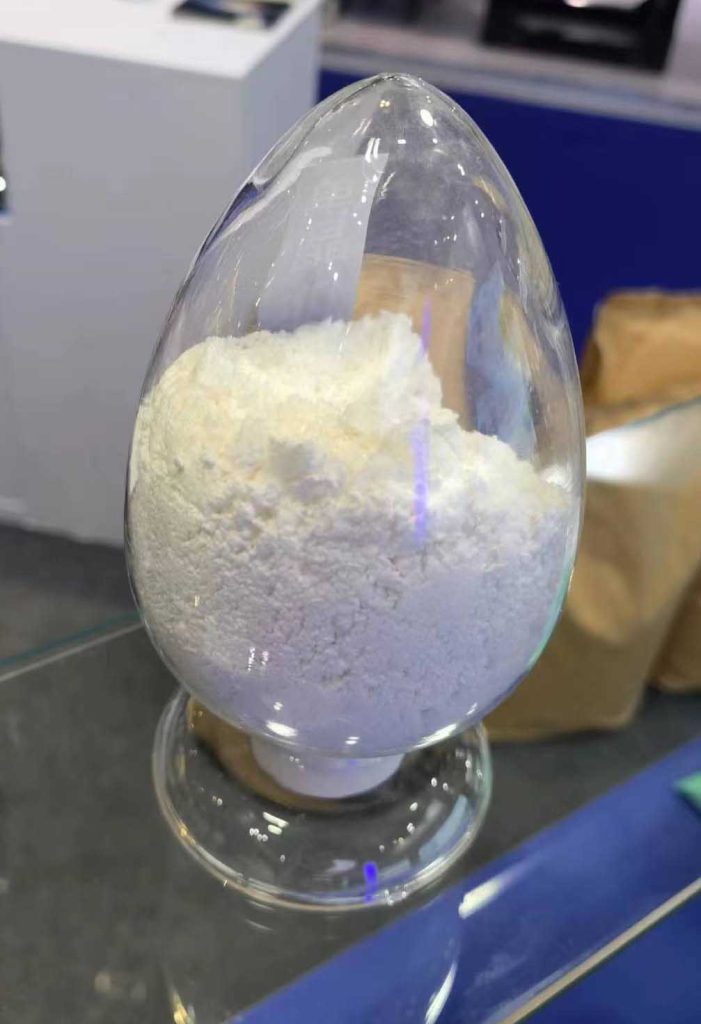Micro Glass Beads
Description
Micro glass beads are a remarkable innovation with a wide array of features and applications. These tiny beads exhibit corrosion resistance, fire resistance, and non-conductivity, making them suitable for diverse industries. Their low density, exceptional dispersion, and smooth liquidity set the stage for remarkable capabilities, including heat and sound insulation.
One of the fascinating applications of glass micro beads is their use as weighted fillers for stuffed animals, for weighted blankets, pillows, and stress balls, where they provide a unique texture and comfort. In industrial settings, these beads shine as reusable abrasives, contributing to polishing, compacting, and blast-cleaning processes. Specifically, pressure blast systems benefit from their efficient performance.
Manufactured within a specialized shaft furnace, micro beads glass boasts a fire-polished surface that enhances their durability and effectiveness. The best part is that their utility is not limited to specialized workers – these beads can be effectively employed by a wide range of professionals. Moreover, their dust-free blasting capability and minimal ventilation requirements make them a practical choice for various projects.
Diving deeper, glass micro beads come in two distinct forms: hollow borosilicate beads and solid glass beads. These variations allow for even more tailored applications, showcasing the beads’ adaptability and flexibility in meeting specific project needs.
Quality Attributes | Hollow Glass Microspheres
Their high strength sets them apart as robust entities capable of withstanding various stresses and environments. This intrinsic durability ensures their longevity and reliability in demanding situations, contributing to their suitability in numerous industries. Chemical stability is another hallmark of micro beads glass, making them compatible with a diverse array of substances and environments. This stability ensures that they can retain their structural integrity and performance even when exposed to potentially corrosive or reactive conditions.
The low thermal expansion of glass micro beads further enhances their value. This characteristic enables them to maintain their shape and properties across a range of temperatures, making them ideal for applications that involve varying thermal conditions. The exceptional flowability of these beads adds another layer of versatility to their applications. Their ability to flow and disperse evenly allows them to integrate seamlessly into various processes, from manufacturing to specialized industrial tasks.
Manufactured from colorless glass, micro beads glass acquire a pristine appearance that is not only visually appealing but also functional. This colorless composition makes them suitable for applications where transparency or neutrality is essential, enabling them to seamlessly blend into the final product or process.
Main Composition | Hollow Glass Sphere
When it comes to the exact breakdown, the composition provides a deeper understanding of how these elements work in harmony to create such unique entities. Silicon dioxide takes the lead, constituting approximately 70-75% of the glass micro beads’ makeup. Its prevalence underscores its role as a foundational material, contributing to the overall structure and enhancing the beads’ durability.
Aluminum oxide, though present in relatively small quantities, adds an essential touch of strength to the mix. With a concentration of more than 2%, its influence becomes apparent in the beads’ resilience and ability to withstand a variety of conditions. Calcium oxide contributes significantly to the composition, accounting for 8 to 10% of the micro glass beads’ makeup. This element plays a crucial role in influencing the beads’ properties, often contributing to their chemical reactivity and potential applications.
Iron, present in minute amounts of less than 0.3%, showcases how even trace elements contribute to the overall composition. Its presence, though limited, can impart subtle but significant alterations to the beads’ behavior and properties. Similarly, magnesium oxide, occupying less than 2% of the composition, adds a touch of versatility. Its role may be modest, but it showcases the intricate balance of elements that contribute to the beads’ multifaceted nature. Boric oxide, at 6-8%, encapsulates the composition by imparting specific attributes to the beads.
Physical Property
Delving into their structural properties, micro beads glass exhibits a particle density range of 1.5 to 2.2 g/cm³. These characteristic underscores their compactness while offering insights into their potential applications across various industries. An accumulation factor of 60% further accentuates their ability to amass effectively, presenting intriguing possibilities for their use in both commercial and industrial contexts.
Micro glass beads don’t just stop at their physical density. According to micro glass beads suppliers, their particle size showcases an impressive span, ranging from 5 to 80 micrometers. This diverse size distribution opens avenues for customization, allowing them to fulfill specific requirements within distinct applications. Moreover, their relatively low volatile component, at a mere 0.27%, demonstrates their stability and suitability for processes where consistency and controlled behavior are essential.
These attributes collectively paint a vivid picture of micro glass beads as materials with immense potential. From reflective coatings to fillers in various products, these beads have shown their adaptability and utility across numerous domains. Whether it’s optimizing light reflection or enhancing material properties, micro glass beads stand as a testament to the intricate interplay of composition and function in the world of materials engineering.
Field of Application
Within the realm of marble production, micro glass beads have become a hidden gem. Their integration into the process brings forth an enhanced finish and texture to marble surfaces. These beads play a crucial role in refining the aesthetic appeal of marble, contributing to its lustrous appearance and tactile allure.
The building materials industry benefits immensely from the incorporation of micro glass beads. As essential components, these beads contribute to the fabrication of plates used in construction. Their role extends beyond aesthetics, aiding in reinforcing the structural integrity of these plates, enhancing their durability, and ensuring they can withstand the demands of construction projects.
In the glue industry, micro glass beads offer a unique value proposition. Their inclusion in adhesive formulations introduces improved bonding properties and texture. This ensures that the resulting adhesives not only provide effective adherence but also offer a consistent application experience, enhancing their overall utility.
Even within the intricate world of electronics, micro glass beads have found their niche. They contribute to specialized manufacturing processes, where their controlled properties play a pivotal role. From enhancing the performance of electronic components to facilitating intricate assembly processes, these beads demonstrate their versatility and adaptability.
Advantages Micro Glass Beads
One of the standout benefits of micro glass beads lies in their role as exceptional filling agents. Their ability to seamlessly integrate into industrial processes is a result of their well-defined properties. These beads, meticulously manufactured from colorless glass, possess attributes that make them reliable choices for enhancing the properties of various materials. As filling agents, they contribute to improving the overall strength, durability, and consistency of industrial products, spanning from construction materials to specialized manufacturing components.
Micro glass beads have garnered significant attention for their prowess as blasting media. When it comes to surface treatment applications, these beads shine as reliable options. Their hardness and controlled size distribution allow them to effectively remove unwanted materials, contaminants, or imperfections from surfaces. The result is a rejuvenated surface that’s not only clean but also prepped for further processes such as painting, coating, or bonding. This capacity to facilitate precise surface preparation showcases their importance in industries where meticulous surface quality is paramount.
The origin of micro glass beads from colorless glass is a strategic choice that amplifies their utility across multiple applications. This colorless composition allows them to seamlessly integrate into various materials without introducing unwanted hues or altering the intended appearance of the end product.
Safety Handling and Packaging
Recognizing their non-flammable nature, it’s essential to acknowledge that micro glass beads can still pose certain hazards. They have the potential to irritate the skin, eyes, and respiratory tract, emphasizing the importance of proper handling procedures. Under no circumstances should they be ingested. Establishing good ventilation within the workplace is a fundamental step to mitigate potential risks.
A key aspect of safe handling involves proper attire. Wearing a mask, work clothes, and gloves can provide a protective barrier against potential contact and inhalation hazards. This precautionary measure not only safeguards the individual but also ensures that the glass micro beads remain uncontaminated during the handling process. Given the non-flammable nature of these beads, it’s still crucial to steer clear of fire and heat sources. Smoking, eating, and drinking around the working area should be strictly prohibited. Adhering to good hygiene practices becomes indispensable to prevent any inadvertent contamination.
When it comes to storage, a cool and well-ventilated environment is ideal. Glass micro beads bulk should be kept away from fire and heat sources, emphasizing the need to prevent any heat-induced incidents. Moreover, glass micro beads in bulk are essential to store them separately from oxidants, strong acids, and alkalis to avert any unwanted chemical reactions. Ensuring the storage area is equipped to manage potential leaks and spills is crucial. Employing appropriate storage materials that can effectively contain and manage any unforeseen releases is an integral aspect of a well-rounded storage strategy.
The role played by hollow glass microspheres in different application fields is evident to everyone. The stability of their chemical properties and their widespread application in various fields are all excellent chemical additives.


